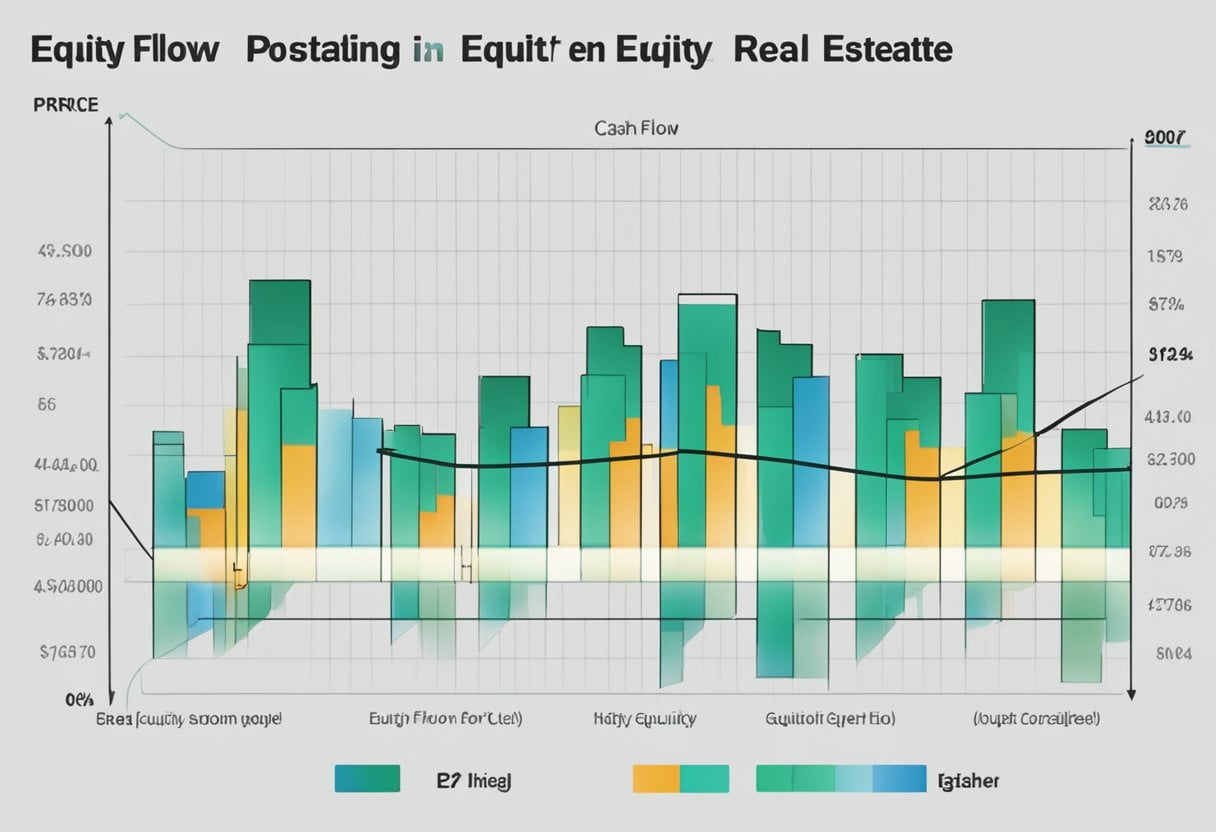6 Key Economic Indicators to Understand Real Estate Cycles: Successful Navigation in Real Estate Market
Why we need to watch out for Economic Indicators to Understand Real Estate Cycles?
As the tide of the economy ebbs and flows, so too does the landscape of real estate. You’re not just a bystander; you’re the captain of your own financial destiny, navigating through the shifting sands of the property market.
By getting to grips with six key economic indicators to understand real estate cycles—Gross Domestic Product (GDP), employment rates, housing starts, interest rate trends, the Consumer Confidence Index, and rental yield performance—you’ll chart a course toward understanding the real estate cycles.
These indicators are your compass, revealing when to invest, when to hold, and when to cash out. They’re not just numbers; they’re the signals that guide you to freedom in a market that’s as unpredictable as the sea.
Gross Domestic Product (GDP)
Amid the myriad of economic indicators, Gross Domestic Product (GDP) stands as a pivotal marker you shouldn’t overlook when analyzing real estate cycles. This figure represents the total value of all goods and services produced over a specific period, acting as a snapshot of economic health.
As you seek to navigate the market with agility, understanding GDP’s influence on real estate is crucial for maintaining your financial independence.
A robust GDP often heralds a period of prosperity, igniting consumer confidence and spending. This uptick in economic activity can increase demand for both residential and commercial spaces, creating a fertile ground for investment opportunities.
As you chart your course through the economic cycle, remember that a thriving economic climate, reflected in rising GDP numbers, can mean more potential tenants and buyers, driving up property values and rental rates.
Conversely, a downturn in GDP signals a contraction in the economy. During these phases, you might witness a cooling of the real estate market, as investor apprehension and a decline in consumer spending take hold. In these waters, you’ll need to steer carefully, considering how reduced demand could affect your investment strategy.
Always keep an eye on GDP—it’s a beacon that can help you anticipate changes in the real estate market’s tides.
Employment Rates
In addition to GDP, employment rates are indispensable for deciphering the ebbs and flows of the real estate market. When employment data reflects a robust job market, there is likely to be a corresponding uptick in the demand for real estate. With more people landing jobs, there is a surge in financial confidence and the freedom to invest in homes, either to live in or as a means to grow wealth.
Conversely, when job security falters and employment rates dip, caution kicks in. People are not as quick to buy property. They might hold off on upgrading their living situation or investing in that rental property they have been eyeing. This hesitation can cool off the housing market considerably.
Remember, it is not just about buying; employment stability also sways the rental market. High employment often leads to more people moving to areas with abundant job opportunities, increasing the demand for rental properties in those hotspots.
Keep an eye on employment trends—they are a powerful signal of where the real estate market is headed, offering you the insight to make informed, bold moves.
Housing Starts
You’ll find that housing starts are a critical gauge of construction activity, directly reflecting the real estate market’s pulse.
They not only indicate current demand for residential properties but also signal upcoming development trends.
Construction Activity Gauge
Understanding the momentum of housing developments, housing starts serve as a critical barometer for gauging the construction sector’s vitality. These figures reveal much more than just the number of homes being built; they’re a snapshot of the market cycle, signaling whether property values are likely to climb or plateau. As you track housing starts, you’re also peering into demographic trends, such as population growth or shifts that drive demand for new homes.
Demand Indicator
As an investor, you’re tracking every new residential project, since each one signals the current appetite for real estate within the market. Housing starts aren’t just numbers; they’re a pulse check on the Housing Market’s vitality.
A spike in these starts tells you there’s a robust demand, a sign that freedom-loving individuals like you can capitalize on emerging opportunities. On the flip side, a dip might hint at a cooling phase, a cue for you to strategize your next move carefully.
Grasping the ebbs and flows of housing starts empowers you to navigate the real estate market with confidence. It’s your compass, pointing out where the demand lies and where the winds of the market might be shifting—critical intel for your pursuit of investment success.
Development Trends
Building on the demand indicators, you’ll see that development trends in housing starts are a dynamic reflection of market confidence and investment activity. As property prices rise and fall, so does the demand for properties, influencing real estate investment and construction.
The monthly reports on residential construction activity are your compass in this landscape, revealing where builders are placing their bets. By analyzing these reports, you gauge the tempo of new developments—whether it’s a cautious step back or a bold leap forward.
Keep a keen eye on regional trends; they’re like a mosaic of opportunities and risks. With the right insights, you’ll navigate through the cycles, finding freedom in making informed decisions that align with your investment strategy.
Interest Rates Trends
You’ll find that the ebb and flow of interest rates significantly influence real estate market dynamics, often dictating whether it’s a buyer’s or seller’s market. When interest rates dip, it’s like a siren call for freedom-seekers wanting to own property; mortgage rates follow suit, dropping down and unlocking the doors to more affordable loans. This surge in borrowing power boosts the real estate market, as more individuals can chase the dream of homeownership.
Conversely, when interest rates climb, the cost of borrowing spikes. Mortgage rates rise, and suddenly, that sense of freedom to purchase property feels shackled. Higher rates can cool down the overheated market, making some buyers hit the brakes. Demand may wane, and if you’re eyeing the market, you could see a shift towards more negotiating power, even in a seller’s market.
Staying alert to interest rates trends isn’t just about timing your next move; it’s about understanding the broader impact on your investment portfolio. Real estate investment trusts (REITs), for instance, react to these fluctuations. As rates go up, REITs might lose some luster, but when they drop, the potential for profit in real estate investments often shines brighter. Keep your finger on the pulse of interest rates to navigate the real estate cycles with confidence.
Consumer Confidence Index
You’ve likely noticed how your spending habits change with your mood about the economy; that’s the Consumer Confidence Index at play. It’s a crucial predictor for real estate demand, as higher confidence often means more people are ready to invest in homes.
Keep an eye on this index, as shifts can signal upcoming effects on the real estate market.
Impact on Spending Habits
Your perception of the economy’s health, as reflected by the Consumer Confidence Index, directly influences whether you’ll tighten your purse strings or confidently invest in real estate.
When the CCI sings a tune of optimism, you’re more likely to take the plunge into the housing market, undeterred by fluctuating interest rates or home prices.
Conversely, a low CCI might signal to you that it’s time to be cautious, to wait out the storm before committing to a mortgage.
Remember, government policies often aim to bolster confidence, offering you the freedom to make bold moves.
As you navigate this landscape, keep a keen eye on the CCI; it’s your barometer for when to hold back and when to leap forward in the real estate dance.
Real Estate Demand Predictor
The Consumer Confidence Index serves as your compass, indicating when to expect an upswing in real estate interest and investment. When the index climbs, it’s a sign you’re in a prime position to witness a surge in home sales. This uptick in confidence means people are ready to make moves, emboldened by the belief in a thriving economy. They’re not just dreaming of buying real estate; they’re actively pursuing it.
Be mindful, though, that this confidence plays with interest rates like a delicate dance. As rates fluctuate, so does the market’s tempo. Stay alert and use the CCI as your guide to navigate through these cycles, ensuring you’re ready to act when the moment for freedom and investment aligns.
Confidence Fluctuations Effects
Often, you’ll notice that shifts in the Consumer Confidence Index directly influence the ebbs and flows of the real estate market. This index is one of the key economic indicators that can give you a sense of freedom when navigating real estate cycles.
As confidence rises, you might feel more empowered to take bold steps, like purchasing a new home or investing in property. On the flip side, when confidence wanes, it’s common to see a pullback in market activity.
Understanding confidence fluctuations effects is crucial for anticipating market changes. When confidence soars, demand typically follows, pushing prices up. Conversely, low confidence can signal a downturn, potentially opening up opportunities for you to find value buys.
Stay alert to these trends for strategic real estate decisions.
Rental Yield Performance
Analyzing rental yield performance gives you insights into the profitability of investment properties within the current market. By diving into the numbers, you’ll understand how much bang you’re getting for your buck when it comes to rental income. This is paramount when investing in real estate, as it’s not just about purchasing a property; it’s about ensuring that property rates translate into tangible returns.
You’ve got to keep an eagle eye on how rental yields are trending. They’re a real-time snapshot of what you can expect your investment to churn out. As you compare different areas, you’ll notice that yields can vary wildly. This isn’t just about location—it’s about recognizing the interplay of supply and demand, the whispers of interest rates, and the subtle shifts in demographics that can make or break your passive income dreams.
Staying informed about rental yield performance isn’t just smart; it’s essential for your freedom. It empowers you to make choices that align with your financial independence goals. Whether you’re deciding to invest or divest, understanding the pulse of rental yields ensures you’re not just riding the real estate wave, but commanding it.
Frequently Asked Questions
What Are the Economic Components of the Real Estate Cycle?
You’ll find interest rates, construction activity, and population growth are economic components driving the real estate cycle. They dictate how free you are to invest wisely and spot potential in the housing market.
Which Economic Indicator Should Be Monitored to Analyze the Residential Real Estate Market?
You should closely monitor interest rates, population growth, and construction activity to analyze the residential real estate market effectively and capitalize on opportunities for freedom in your property investments.
Which of the Following Is One of the Economic Components of a Real Estate Cycle?
You’re on the edge, wondering what drives real estate’s ebb and flow. Interest rates, consumer confidence, and construction activity—they’re the economic components that can either shackle or liberate your property dreams.
What Are the Indicators of a Recession in Real Estate?
You’ll notice recession indicators in real estate by plummeting housing affordability, spiking foreclosure rates, and declining construction activity. These shifts signal tightened credit and lower investment freedom in the property market.
Conclusion
You’ve got the tools to decode real estate cycles now.
Imagine you’re eyeing a vibrant city where GDP’s on the rise and jobs are plentiful. Housing starts are up, signaling growth. Yet, if interest rates climb and consumer confidence dips, tread carefully.
Your best bet? Find a neighborhood with solid rental yields, a real cushion against market swings.
Keep these indicators in check, and you’ll be savvy to where the market’s headed.
Stay sharp and invest wisely.








2 Comments
Comments are closed.